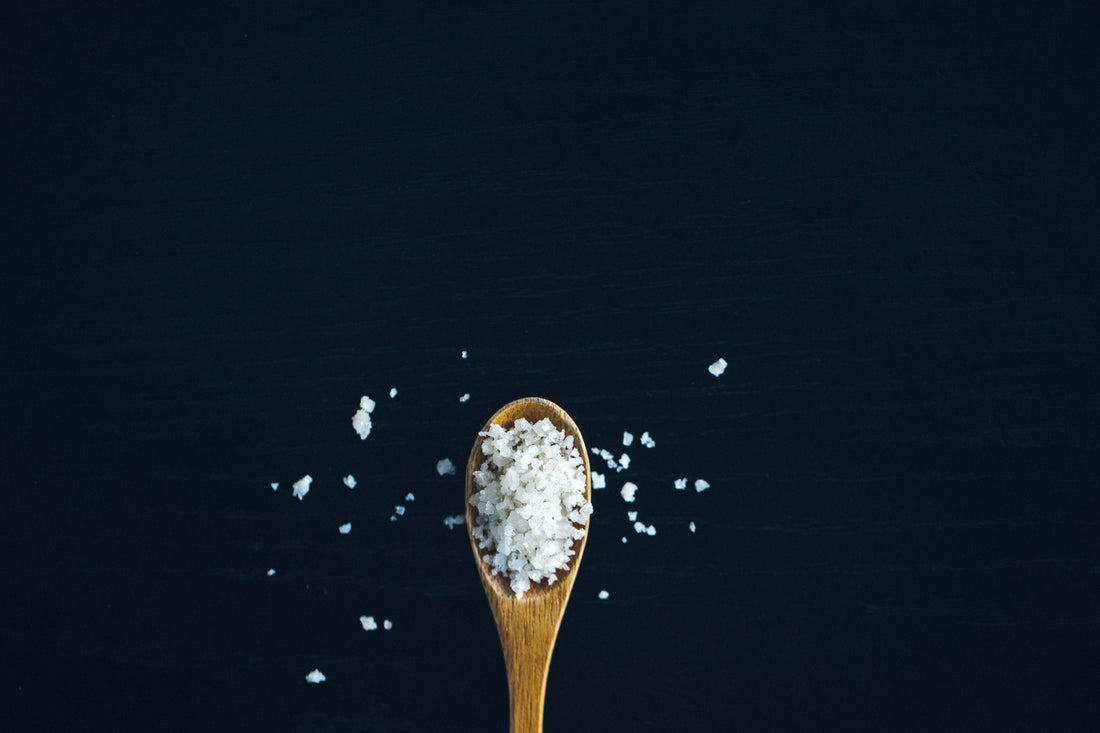
The Fascinating History of Salt: From Ancient Origins to Modern-Day Uses
The History of Salt: An Introduction
One of the life's most essential and ubiquitous substances, salt elevates taste. We have seasoned and preserved our food for thousands of years. That's why salt's an integral part of human experience. Salt has shaped economies, cultures, and even the course of history.
In this article, we dive into the extraordinary history of salt. We start with its origins and explore everything up until how salt's used today. This exploration includes salt's significance in cuisines around the world. We discuss how salt affects our taste buds and bodies. There's also a section on cultures with a particularly strong connection to salt.
What is Salt?
Sodium chloride (NaCl) is the chemical name for salt. It's a crystalline substance; naturally found in seawater and mineral deposits. Salt's also one of the oldest known food seasonings and preservatives.
Necessary for human life, salt meets bodily requirements for various biological processes. But salt also holds economic, cultural, and historical significance. Throughout humankind, salt has been used as a preservative, seasoning, and even currency.
The Origins of Salt
Salt's history stretches back to ancient times. Evidence suggests that salt has been harvested and used by humans for at least 8,000 years. The earliest known salt extraction comes from ancient China. They created pans to extract salt from brine around 6000 BCE. Ancient civilizations around the world relied heavily on salt for preserving food, essential in times before refrigeration.
Ancient Egyptians used salt for preserving food and mummification. This enabled the Egyptians to store fish, meat, and other foods for long periods. Salt was also a key part of trade between ancient cultures, particularly in Mediterranean regions.
Salt and Its Role in Ancient Civilizations
Salt played a significant role in various ancient civilizations, influencing trade, culture, and even warfare. In Ancient Rome, salt was so important that soldiers were paid in salt, a practice that gave rise to the term "salary" (from the Latin word salarium). Roman soldiers would receive a portion of their pay in salt, which could be used for food preservation or traded for other goods. This highlights how valuable salt was in ancient times.
In the Middle Ages, salt was a prized European commodity. It was so valuable that it was often taxed or controlled by monarchs. Salt was also the key to preserving meats, cheeses, and other food items, which was critical in a time before refrigeration. Salt's ability to preserve food made it indispensable to the survival of entire populations.
Salt also played a significant role in the development of global trade routes. In Africa, the salt trade was as important as the gold trade, with the Sahara Desert acting as a key pathway for salt caravans. Purveyors transported salt across vast distances, and it helped connect different cultures and economies.
Fun Facts About Salt
-
Salt as Currency: As mentioned earlier, salt was so valuable in ancient Rome that soldiers were paid in it. In some cultures, salt was even used as a form of currency.
-
The Salt Roads: The Salt Roads were ancient trade routes through the Sahara Desert, which facilitated salt exchange between North Africa and sub-Saharan Africa. Salt was so valuable that it was often referred to as "white gold."
-
Salt and Religion: Salt holds spiritual significance in many cultures. In Christianity, salt is mentioned numerous times in the Bible, symbolizing purity and preservation. In Hinduism, salt is often used in rituals and deity offerings.
-
The Salt Lick: Animals also love salt. Many wildlife species, including deer and elk, seek out natural salt deposits, known as "salt licks," to satisfy their mineral needs. But if you've ever seen a horse at their salt lick, you know there's love in it too.
-
Salt and Health: While too much salt can be harmful, small amounts are essential for the body. Sodium, found in salt, is crucial for maintaining proper fluid balance, nerve function, and muscle contraction.

The Role of Salt in Cuisines Around the World
Salt is an essential ingredient in almost every cuisine across the globe. Its ability to enhance the natural flavors of food and preserve it has made salt a cornerstone of many global culinary traditions.
European Cuisines
In Europe, salt has been used for centuries in various cooking and preservation methods. Italy, for example, works salt into many pasta dishes, especially those involving seafood or cured meats. Mediterranean cuisine, including Greek and Spanish dishes, also relies heavily on salt. It's used in everything from olives to seafood and cured meats like jamón in Spain and prosciutto in Italy.
Asian Cuisines
Salt is also fundamental to many Asian cuisines, though it's often used in more subtle ways compared to Western cooking. In China, soy sauce, which is made with salt, is a key culinary ingredient. Salted fish and pickled vegetables are common in Southeast Asia. In Japan, salt is used for cooking and also traditional rituals. For instance, many Japanese use salt when purifying spaces during festivals.
African Cuisines
In African cuisines, salt is vital for flavoring and preservation. In West Africa, dried fish and meats are often seasoned and preserved with salt. North Africa, particularly in Morocco, uses salt in spice blends like ras el hanout and essential dishes like tagine, where salt balances stew flavors.
South American Cuisines
Salt is indispensable in South American cooking. In countries like Peru and Argentina, they season meats with salt, especially when grilling. Brazilian cuisine also incorporates salt in its famous barbecue, known as "churrasco". That's when large cuts of meat are often simply seasoned with salt before cooking over an open flame.
Salt and Its Impact on the Taste Buds
Salt has a powerful effect on the taste buds. When we consume salt, it activates specific taste receptors on our tongues, which makes the food more flavorful. Salt enhances natural flavors of food by suppressing bitterness and enhancing sweetness. That's why savory dishes, from soup to meat, are seasoned with salt.
But salt doesn’t just make food taste better—it also plays a critical role in how our bodies respond to food. Salt helps maintain the balance of fluids in the body, and improves nerve transmission and muscle function. Without the right amount of sodium, our bodies cannot work properly.
Interestingly, salt also has the ability to influence our emotional responses to food. Studies have shown that salt can trigger feelings of pleasure and satisfaction. That's why it’s such a welcome addition to comfort foods.
How Salt Affects the Human Body
While salt is essential for life, too much salt can be detrimental to health. The body requires a small amount of sodium to maintain hydration, nerve transmission, and muscle function.
However, excessive salt consumption has been linked to various health problems, including high blood pressure, heart disease, and kidney issues. The average person consumes more salt than necessary. That may be due to high levels of salt found in processed and fast foods.
The recommended daily intake of salt is about 2,300 milligrams for most adults. That's equivalent to about one teaspoon. However, the average American consumes much more than this. Many American diets exceed 3,400 milligrams of salt per day. Reducing salt intake can have significant health benefits. That's especially true in reducing the risk of high blood pressure and other cardiovascular diseases.
By contrast, in some medical situations someone may suffer from dehydration. In that case more salt may be necessary to restore electrolyte balance. This is why sports drinks and oral rehydration solutions often contain salt.
Additionally, in some extreme survival situations, people have been known to drink salt water to replenish lost electrolytes, though this practice is generally not recommended due to dehydration risk.
Salt Water: Why It’s Not Fit for Human Consumption
While salt water is crucial for ocean life, it's not fit for human consumption. The concentration of salt in seawater ranks too high for humans to drink. When you consume salt water, the high sodium content draws water out of your cells, leading to dehydration. This is because your body uses more water to flush out the excess salt than it gets from the consumed water.
However, there are rare instances when drinking small amounts of salt water can help rehydrate a severely dehydrated person. But this is best done under controlled circumstances and not as a general practice. In survival situations, it’s much better to seek out fresh water sources or use water purification methods.
Conclusion: Salt’s Enduring Legacy
From its origins in ancient civilizations to its place in modern-day kitchens, salt plays an enduring and vital role in human life. Salt shaped economies, drove exploration, and influenced the course of history. Today, salt continues to be a crucial part of our daily lives, from the food we eat to the health of our bodies.
Whether you're seasoning a favorite Tiny Taco or preserving meats, salt is more than just an ingredient—it's a symbol of human ingenuity, survival, and culture. Salt's impact on taste, health, and society is profound and long lasting. That's why salt's one of the most fascinating and essential substances on Earth.
Sources:
"The History of Salt." SaltWorks,
- "The History of Salt." SaltWorks, https://www.saltworks.us/salt_info/history_of_salt.asp
- Salt: A World History, Mark Kurlansky, Penguin Books (January 28, 2003) 978-0142001615
- "Salt in Ancient Civilizations." Encyclopedia Britannica, https://www.britannica.com/topic/salt
- "Sodium: How much do you need?" Harvard T.H. Chan School of Public Health, https://www.hsph.harvard.edu/nutritionsource/salt-and-sodium/
- "Why Drinking Salt Water Is Dangerous." National Geographic, https://www.nationalgeographic.com/science/article/saltwater

